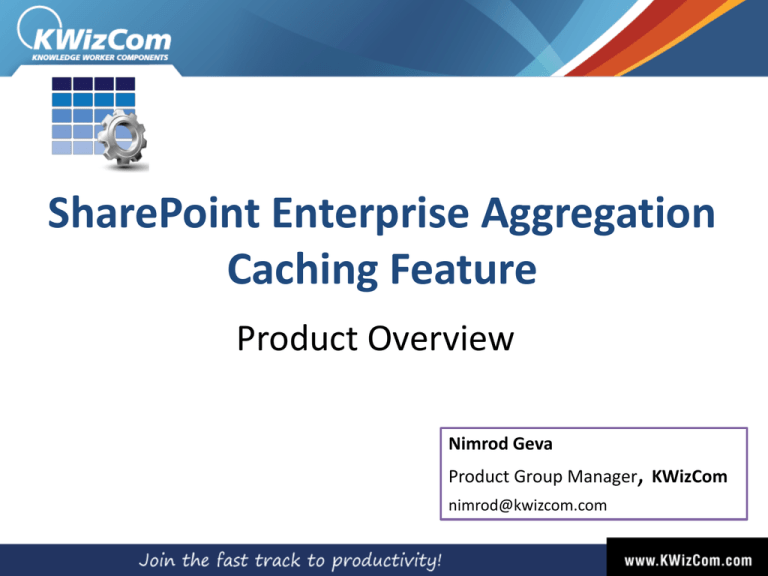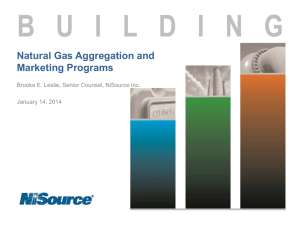KWizCom Enterprise Aggregation Caching Feature
advertisement

SharePoint Enterprise Aggregation Caching Feature Product Overview Nimrod Geva Product Group Manager, KWizCom nimrod@kwizcom.com Can your users query 100 lists, located in 50 site collections, each with over 5000 items, and display the results in less than 3 seconds? What is the SharePoint Enterprise Aggregation Caching Feature? A Cross-web application aggregation caching service, enabling end-users to run extensive queries at fast response with minimum load on your SharePoint WFE servers. What does it do? Web apps. Run cross-web application queries collections Site Site collection Site collection site site site site Store aggregated items in Farm-level cache Cache Aggregation Caching Job What does it do? Web apps. Run cross-web application queries Aggregation Caching Job collections Site Site collection Site collection site site site site Store aggregated items in Farm-level cache Cache Web parts access the cache to quickly render cross-web app. queries Aggregator web part Why did we build it? • SharePoint provides an API only for site-collection scoped queries • Trying to aggregate items across site collections requires running queries in real time: • Slow response time • Heavy load on the front-end servers • Performance degrades when amount of data/sites increases Companies with multi-site collection deployments need a better way to aggregate and display information! How does this work? The solution includes: • Enterprise Aggregation Caching Feature Activate this farm feature to enable aggregation caching in your farm. • Aggregation Caching Rules List Each rule in this list defines a query, scope of aggregation, execution period and more. • Cache The aggregation results are saved in the farm-level cache. • Aggregation caching Job This job executes the aggregation caching rules according to their defined settings, and saves the results in the cache. Step 1: Activate the Enterprise Aggregation Caching Farm Feature Step 2: Configure the Aggregation Caching Rules list In this page you create the Aggregation caching rules list. Step 3: Create aggregation caching rules Go to the aggregation caching rules list Step 3: Create aggregation caching rules Click to create a new aggregation caching rule In this example we aggregate the Tasks lists in all the sites in http://kwizcom web application Select the type of lists that this rule aggregates Type the url of a list view that will be used as the query (aggregation) definition Define the aggregation scope kwizcom, 3 Step 3: Create aggregation caching rules Configure the user account used to run the aggregation You can further define the exact time frame in which the aggregation should be executed Once a rule is saved it is processed by the aggregation caching job. You can see when that rule was executed last time, and how long it took. OK...so now what? Use KWizCom’s List Aggregator web part to connect to the Enterprise aggregation cache Selecting an active caching rule connects the web part to that rule’s cached results In this example we display cached aggregation results from 17 site collections, response time is less than 2 seconds!! Cache public API With the enterprise aggregation cache feature, your developers can: Create cache rules programmatically Request manual cache rule update programmatically Get a DataTable with the cache results Simply poll the cache rule status for display (icon, description) Summary Centrally-managed, Enterprise aggregation caching mechanism. Reduce aggregation load from your front-end servers. Provide your users with much faster aggregation tool. Now you can run cross web application queries! We value your feedback! Does this solution answer your needs? Need other/additional features? Tell us what you think! KWizCom continuously communicates with end users and customers, and according to your feedback we improve our solutions to help you get more productive with SharePoint. Nimrod Geva Product Group Manager, KWizCom nimrod@kwizcom.com 22








